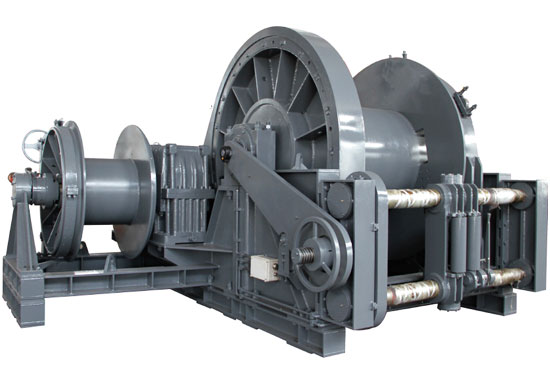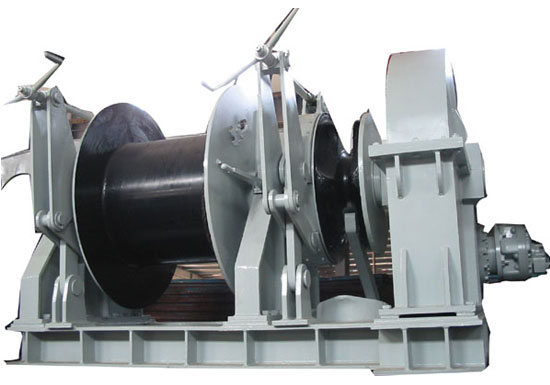Transporting a 50 ton winch safely requires careful planning, proper equipment, adherence to regulations, and attention to safety protocols. A winch of this size and weight is considered heavy machinery and requires specialized handling to ensure both the safety of personnel involved and the integrity of the equipment being transported. Here are the key steps and considerations for safely transporting a 50 ton winch:

Conduct Pre-Transport Assessment
Before transporting the 50 ton winch, conduct a thorough assessment of the equipment and the transport route. Inspect the winch for any signs of damage, wear, or malfunction that may affect its stability during transport. Evaluate the weight, dimensions, center of gravity, and load-bearing capacity of the winch to determine suitable transport methods and equipment.
Obtain Necessary Permits and Clearances
Check local regulations, permits, and clearances required for transporting oversized or heavy machinery, such as a 50 ton winch. Obtain permits for oversize load transportation, route approvals, road closures (if needed), and any other regulatory requirements specified by transportation authorities. Ensure compliance with weight restrictions, height limits, and transportation guidelines.
Select Appropriate Transport Equipment
Choose suitable transport equipment capable of handling the weight and size of the 50 ton winch. Options may include flatbed trailers, lowboy trailers, heavy-duty trucks with specialized lifting mechanisms, or transport cradles designed for heavy machinery. Ensure that the transport equipment is in good condition, properly maintained, and equipped with securing devices, such as chains, straps, and tie-downs.
Secure and Prepare the Winch for Transport
Securely anchor and stabilize the 50 ton winch onto the transport equipment to prevent shifting, tilting, or damage during transit. Use appropriate lifting equipment, such as cranes or forklifts, to position the winch onto the transport platform securely. Use blocking, bracing, and padding materials to cushion and protect sensitive components of the winch from vibrations, impacts, or external forces during transport.
Ensure Load Distribution and Balance
Distribute the weight of the 50 ton winch evenly and maintain proper balance on the transport equipment. Position the winch’s center of gravity over the axle or support points of the transport platform to prevent overloading or tilting. Use load distribution calculations and securement techniques to achieve optimal weight distribution and stability.

Plan Transport Route and Logistics
Plan a suitable transport route that avoids low bridges, narrow roads, sharp turns, steep gradients, and other obstacles that may pose challenges for transporting heavy machinery. Coordinate with transportation logistics providers, traffic authorities, and escort services to ensure a smooth and safe transport process. Schedule transport during off-peak hours or non-peak traffic times to minimize disruptions and congestion.
Implement Safety Measures and Protocols
Implement safety measures and protocols during the transport of the 50 ton winch. Assign trained personnel to oversee loading, securing, and unloading operations. Use warning signs, flags, and reflective markings to alert other motorists and pedestrians of the oversized load. Follow speed limits, traffic regulations, and safety guidelines for oversized load transportation.
Conduct Pre-Departure Checks
Conduct pre-departure checks and inspections of the transport equipment, securing devices, and winch load before starting the journey. Verify that all securing points, tie-downs, chains, and straps are properly tensioned, locked, and secured. Check for any loose or protruding components that may pose hazards during transit.
Monitor and Adjust During Transport
Monitor the condition of the 50 ton winch and the transport equipment during transit. Periodically check securing devices, load stability, and balance to ensure that the winch remains safely secured and aligned on the transport platform. Make any necessary adjustments or corrections to address shifting, vibrations, or load distribution issues.
Unload Safely and Securely
Upon reaching the destination, unload the 50 ton winch safely and securely from the transport equipment. Use appropriate lifting equipment, ramps, and unloading procedures to lower the heavy duty winch onto stable ground or designated installation area. Ensure that unloading operations are conducted by trained personnel following safety protocols and guidelines.
In conclusion, safely transporting a 50 ton winch requires meticulous planning, adherence to regulations, use of appropriate equipment, and strict adherence to safety protocols. By following these steps and considerations, you can ensure the safe and efficient transport of heavy machinery like a 50 ton winch while minimizing risks and ensuring compliance with transportation regulations and safety standards. Learn more about winch transportation from winch manufacturer.